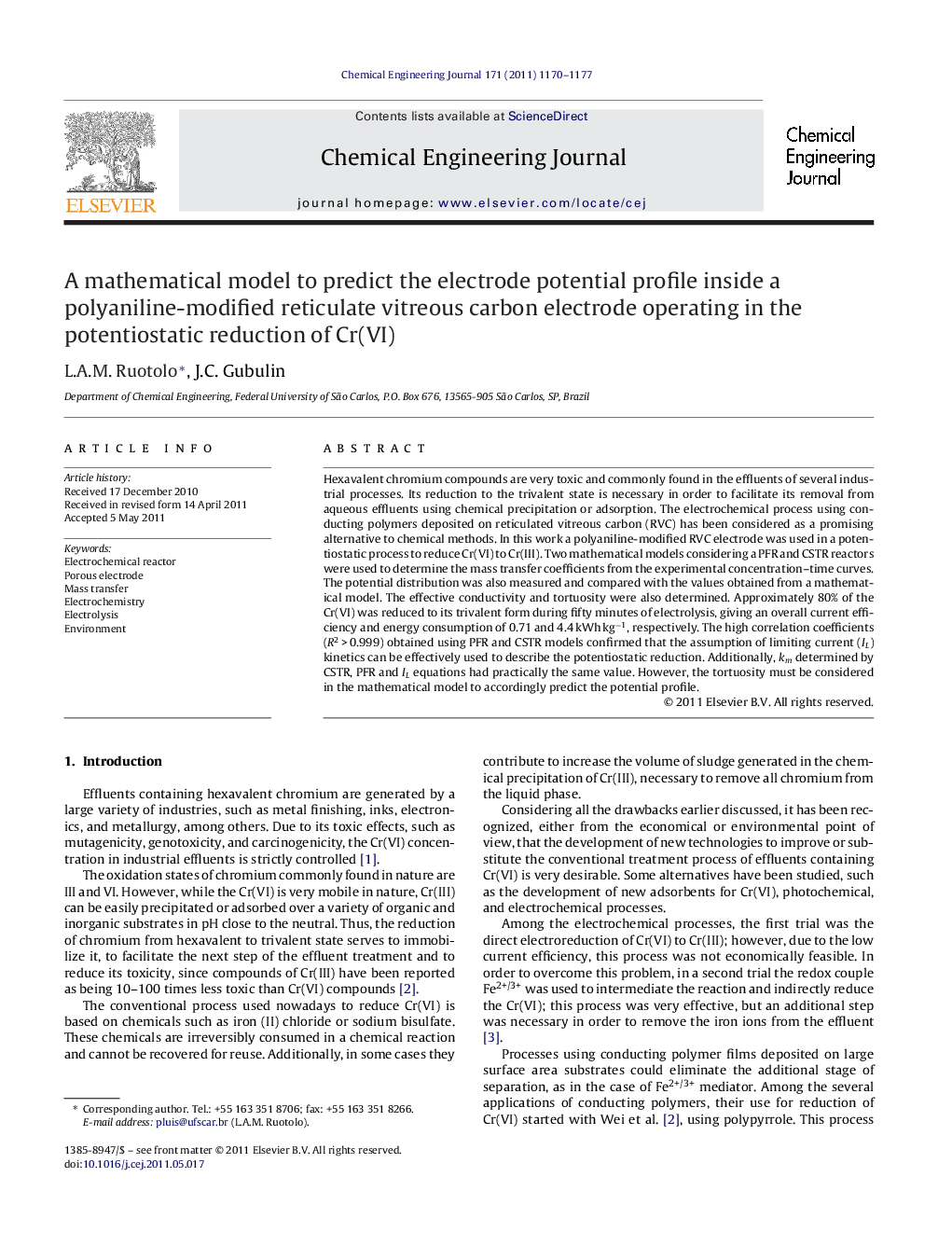| کد مقاله | کد نشریه | سال انتشار | مقاله انگلیسی | نسخه تمام متن |
|---|---|---|---|---|
| 150912 | 456459 | 2011 | 8 صفحه PDF | دانلود رایگان |

Hexavalent chromium compounds are very toxic and commonly found in the effluents of several industrial processes. Its reduction to the trivalent state is necessary in order to facilitate its removal from aqueous effluents using chemical precipitation or adsorption. The electrochemical process using conducting polymers deposited on reticulated vitreous carbon (RVC) has been considered as a promising alternative to chemical methods. In this work a polyaniline-modified RVC electrode was used in a potentiostatic process to reduce Cr(VI) to Cr(III). Two mathematical models considering a PFR and CSTR reactors were used to determine the mass transfer coefficients from the experimental concentration–time curves. The potential distribution was also measured and compared with the values obtained from a mathematical model. The effective conductivity and tortuosity were also determined. Approximately 80% of the Cr(VI) was reduced to its trivalent form during fifty minutes of electrolysis, giving an overall current efficiency and energy consumption of 0.71 and 4.4 kWh kg−1, respectively. The high correlation coefficients (R2 > 0.999) obtained using PFR and CSTR models confirmed that the assumption of limiting current (IL) kinetics can be effectively used to describe the potentiostatic reduction. Additionally, km determined by CSTR, PFR and IL equations had practically the same value. However, the tortuosity must be considered in the mathematical model to accordingly predict the potential profile.
► Metal electrodeposition on reticulated vitreous carbon electrode.
► Mass transfer in electrochemical reactors.
► Mathematical model for potentiostatic electrodeposition of copper.
► Potential profiles within porous electrodes.
► Removal of hazardous toxic metals from industrial wastewaters.
Journal: Chemical Engineering Journal - Volume 171, Issue 3, 15 July 2011, Pages 1170–1177